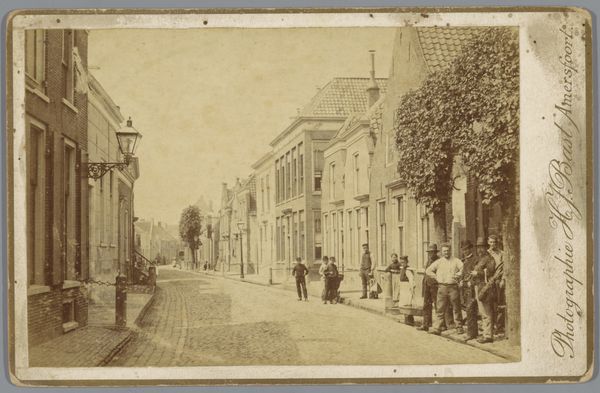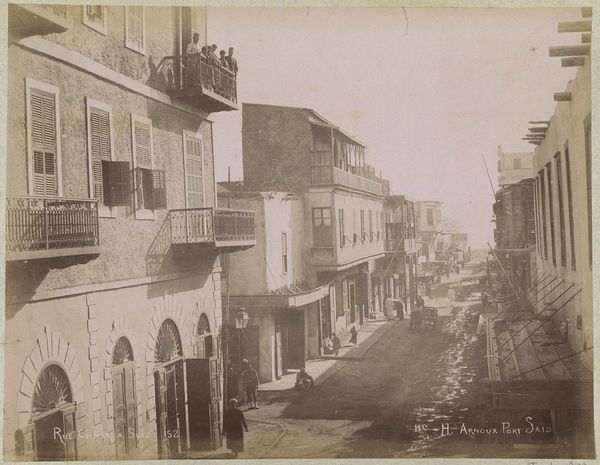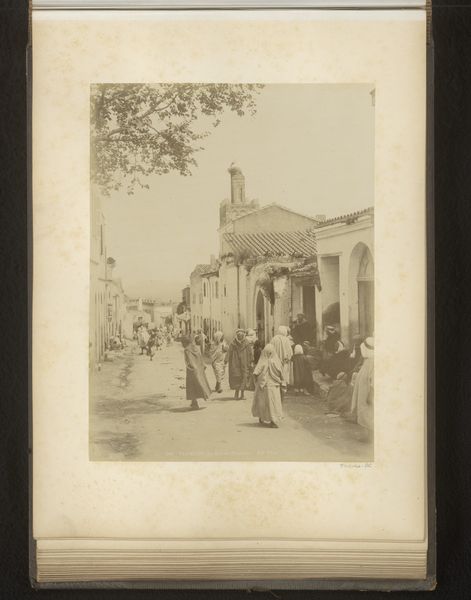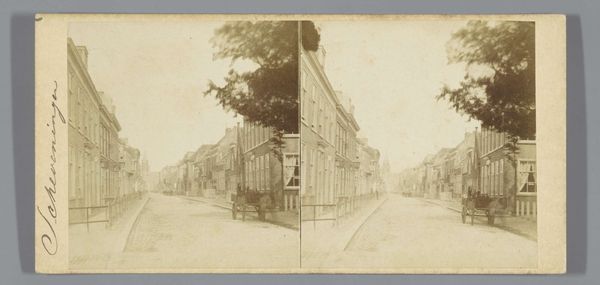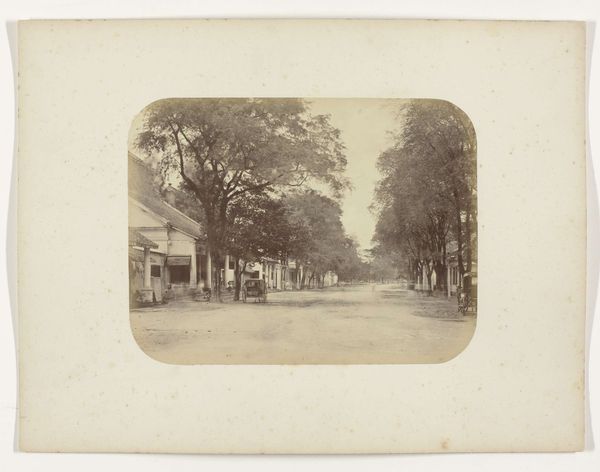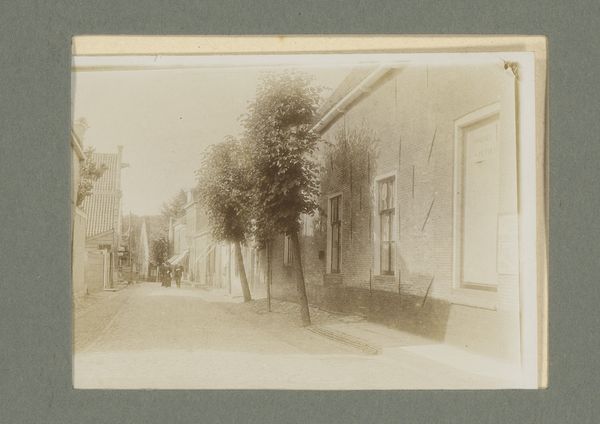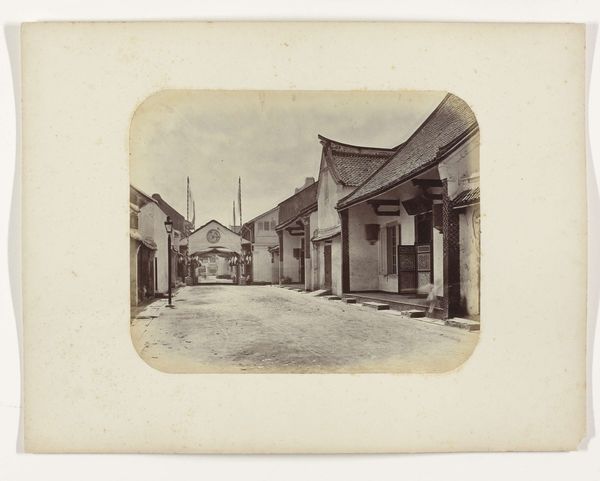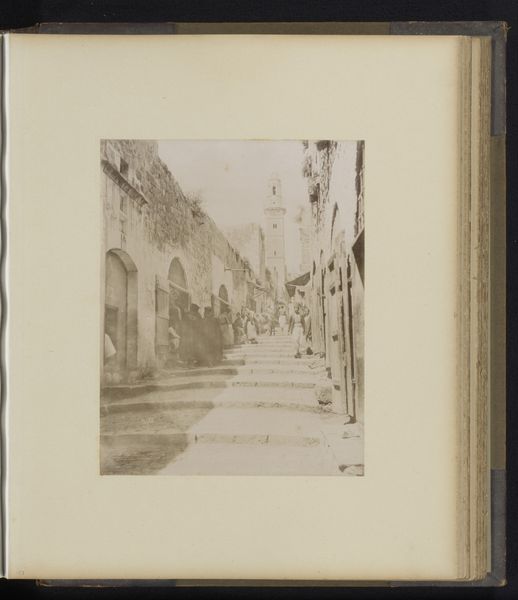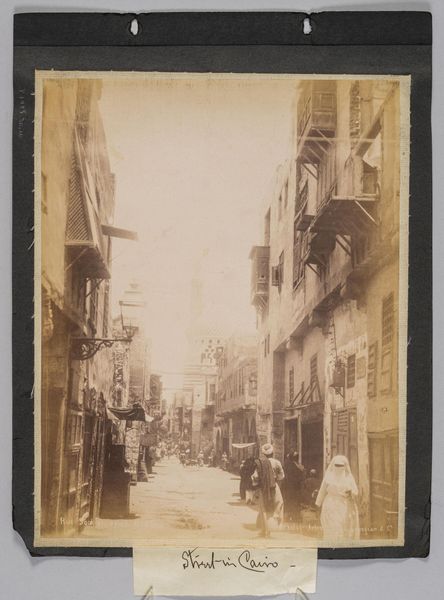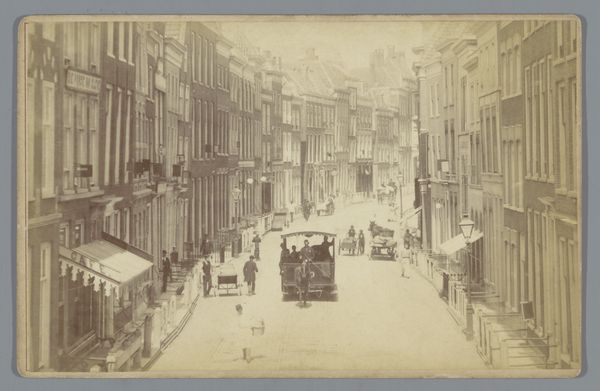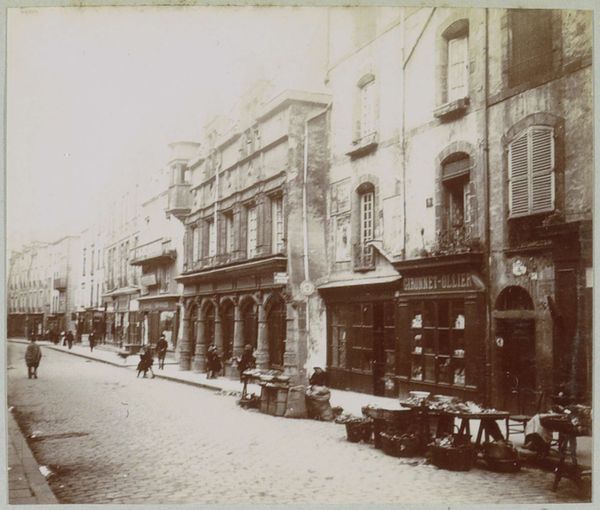
#
amateur sketch
#
aged paper
#
toned paper
#
light pencil work
#
quirky sketch
#
pencil sketch
#
personal sketchbook
#
pen-ink sketch
#
sketchbook drawing
#
pencil work
Dimensions: height 85 mm, height 52 mm
Copyright: Rijks Museum: Open Domain
Curator: Immediately striking – almost spectral. A hazy scene filled with the bustle of figures and carriages. It evokes a very specific sense of place and time. Editor: Indeed. What strikes me about "Straatgezicht te Singapore," created by G.R. Lambert & Co. sometime between 1867 and 1880, is the feeling of transience embedded within the photograph's materials themselves, especially the aged and toned paper stock. This speaks volumes about the photograph's journey through time. Curator: That aging process, inherent in the materiality, contributes to its symbolism. Notice the ethereal figures. The long exposure suggests movement, blurring people and vehicles – almost ghostly presences navigating the colonial streets. Are they ghosts of commerce, progress, or something else entirely? Editor: Precisely. And if we look closely at the carriages and their cargo, this emphasizes Singapore’s role as a key node in the circuits of global trade at the time, capturing this moment of colonial encounter within material constraints that point to the modes of production behind photography in this era. It urges us to question the historical and economic factors influencing photographic creation, highlighting both the artistic and mechanical dimensions of the craft. Curator: Absolutely, and within those blurred figures, the symbolism of cultural exchange and colonial power becomes nuanced. Is it glorifying colonial power or is it simply depicting it? Or something in between? What continuities are suggested about the circulation of materials, culture, and labor, there? Editor: It is tricky. I think that it's a powerful artifact—this aged paper, these fading figures—together conjuring something that extends beyond a static snapshot. These are the processes of change rendered into one object for our consideration. It captures this moment in time without freezing it, inviting discussion, rather than shutting it down. Curator: An apt sentiment. It allows us to view colonial Singapore not as a fixed entity, but a process, as you suggested, filled with shifting identities and perspectives. Editor: An object like this challenges boundaries – it bridges the gap between high art and humble document, pointing instead to their mutual embeddedness within very specific relations of power and making. Curator: Thank you for elucidating these points. I'll walk away today with a different idea of how symbolism operates on these photographic streets.
Comments
No comments
Be the first to comment and join the conversation on the ultimate creative platform.

